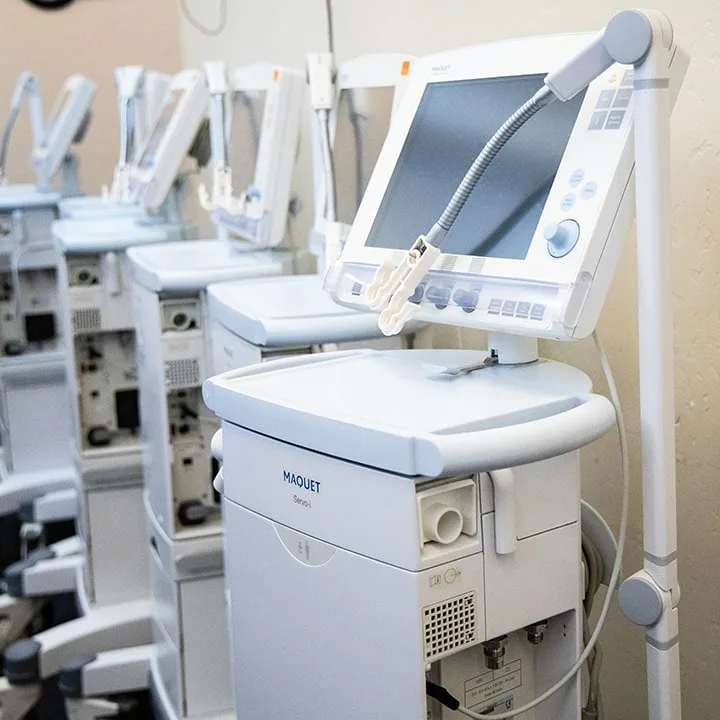What Are the Types of Medical Ventilators and How Do They Work?

By Dani Vaughan
The topic of medical ventilators is one that has gained more attention and curiosity over the past year due to COVID-19. They are lifesaving tools that are used to help treat a variety of respiratory illnesses. How do they actually work? What are the different types of ventilators? What types of patients need a ventilator? What is it like being on a ventilator? We take a closer look at these lifesaving devices to gain a better understanding of what they do.
How do they actually work?
Ventilators assist or take over the breathing function for patients that are too sick to breathe on their own and to help relieve the stress on the body to promote healing. They use positive pressure to push air into the lungs. There are different types of ventilators, and each provides varying levels of support dependent on the patient’s needs.
They generally force air that is mixed with added oxygen or medication through a breathing tube into the patient and into their lungs. It does not only ensure that oxygen and air are going into the patient’s lungs but also simulates an exhale to move carbon dioxide out of the lungs.
With positive pressure ventilators, there are three settings or parameters that might be used when used on a patient. In simplified terms, the modes or settings are:
- Volume Controlled – a pre-determined amount of air is delivered to the patient.
- Pressure Controlled – air is delivered to the patient until a set pressure limit is reached.
- Dual – combines both the options of volume and pressure when used on a patient.
What are the different types of medical ventilators?
Invasive and Non-Invasive are the main two categories:
- Invasive: a tube is either placed into the patient’s airway or is inserted through a hole made in the neck. These ventilators are also called mechanical ventilators, and they take over breathing for the patient entirely. They are used when the patient is unable to breathe on their own or require extra help to breathe efficiently.
- Non-Invasive: the patient wears a mask that fits over the nose and mouth, and the air blows into their lungs. Depending on the condition of the patient, a respiratory therapist will determine what type of ventilator will be used for them.
What types of patients need a medical ventilator?
Invasive ventilators are intended to be used as a short-term solution for breathing assistance in patients during surgeries, while sick with serious respiratory illnesses, or for any other medical conditions that interfere with normal breathing patterns. Even when an ill patient is able to breathe on their own without a ventilator, this type of care is typically used in the ICU and is intended to help ease the breathing process, alleviate some of the stress that is on the body, and allow the patient to heal. Long-term care may be needed for some patients if they are unable to breathe independently.
What is it like being on a medical ventilator?
Having a machine breathe for you isn’t usually painful. When the tube is placed in a patient’s airway, it can cause some discomfort. Sedatives and other medications are often used to help ease the anxiety and pain that they might experience.
Ventilators are an extremely important piece of equipment when it comes to treating debilitating respiratory diseases such as COVID-19. While they are not the cure to any of these respiratory diseases, ventilators provide vital life support that gives patients a chance to recover.
